What is an Orangery?
Originally designed in the 17th century to protect citrus trees during the winter, orangeries have evolved into bright, versatile living spaces. They sit somewhere between a traditional extension and a conservatory, often featuring brick or stone walls with large windows and a choice of roof styles. The result is a room that feels connected to the garden while still being usable year-round.
Whether you’re looking for a quiet reading spot or a place to host friends, an orangery can offer a mix of natural light and comfort. But what exactly sets it apart from other home additions?
Key Points
- Orangeries originated in the 17th century and were symbols of wealth and status among the European aristocracy.
- Modern orangeries offer energy efficiency, elegance, and a perfect balance between indoor comfort and outdoor beauty.
- Adding an orangery can enhance your home’s value and aesthetic appeal, while also providing privacy without compromising natural light.
- Orangeries create a tranquil and elegant space that seamlessly connects your home with your garden. They are also suited to year-round use.
The History of Orangeries
These early protectors of citrus trees—especially oranges and lemons— were more than just greenhouses; they were often substantial, well-designed buildings that reflected the architectural styles and tastes of the time.
In Britain, orangeries became popular among the upper classes and were commonly found on the grounds of stately homes. Over the centuries, their design adapted to shifts in architectural preferences and technological developments, such as improved glassmaking and heating.
Today, orangeries continue to serve as transitional spaces between the home and the garden. While modern versions may differ in materials and purpose, they still draw inspiration from their historical roots, combining natural light, architectural interest, and a connection to the outdoors.
Specialists in this field since 1987, the Thermaglaze team will be happy to answer any questions you may have.
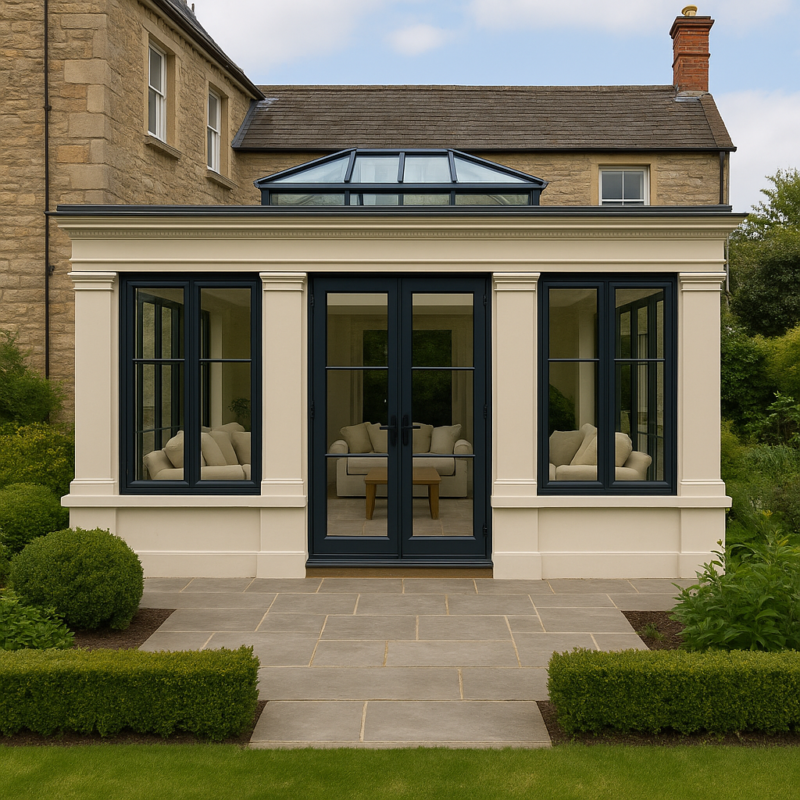
What Exactly is an Orangery?
An orangery is a home extension that combines traditional architectural elements with modern usability. A classic orangery typically includes a solid roof with a central glass lantern, although a variety of roof styles—from glazed to solid or a combination of the two—are available. This configuration offers improved insulation and a more solid, room-like feel, allowing plenty of natural light.
Structurally, orangeries often use brick or stone construction materials for the lower walls, paired with large windows or bi-fold doors that open onto the garden. This creates a transition space between the indoors and outdoors, offering a sense of openness while remaining sheltered and usable in all seasons.
These spaces are adaptable and can serve various purposes, such as a living area, dining space, or home office. Modern orangeries’ solid construction and thermal efficiency make them suitable for everyday use throughout the year.
Orangeries can be built to complement a wide range of architectural styles. Whether traditional or contemporary, they can be tailored to match a home’s existing character, making them a flexible option for homeowners looking to expand their living space cohesively and functionally.
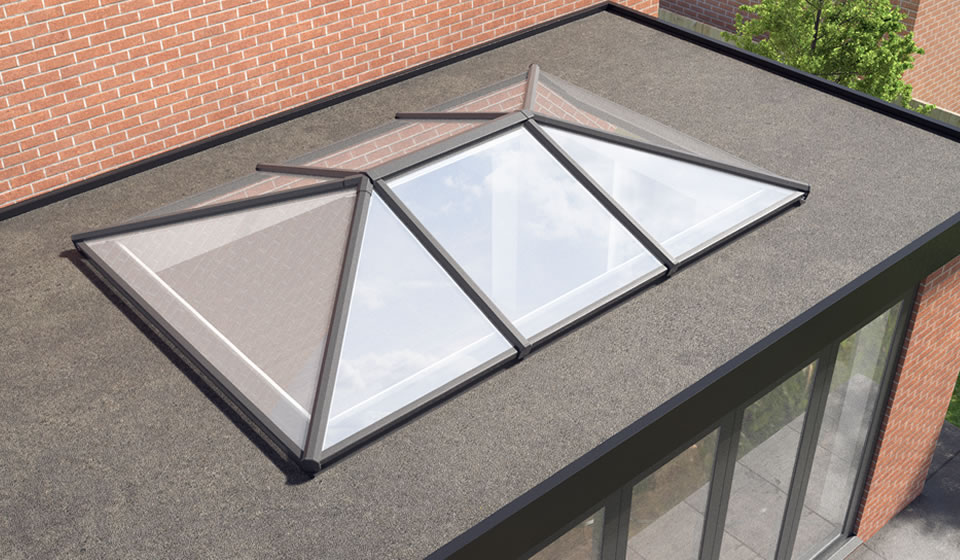
Orangeries and Conservatories: What’s the Difference?
While “orangery” and “conservatory” are sometimes used interchangeably, they refer to two distinct types of home extensions with different architectural features and uses. Understanding these differences can help clarify which option is more suitable for your home.
Conservatories are typically characterised by their fully glazed roof and walls, which allow for maximum sunlight and a clear view of the sky. This design creates a bright space that feels closely connected to the garden but can also be more susceptible to temperature changes throughout the year.
Orangeries, on the other hand, typically feature solid walls with glazing between and a glazed or partially glazed roof that may feature a central glass lantern. This design provides natural light while enhancing insulation and creating a more enclosed, room-like atmosphere, which helps it blend seamlessly with the house’s original structure and offers greater privacy.
The choice between the two often depends on how the space will be used. Conservatories are ideal for enjoying sunlight and views, particularly in warmer months. Orangeries, due to their sturdier construction and thermal performance, are better suited to year-round use.
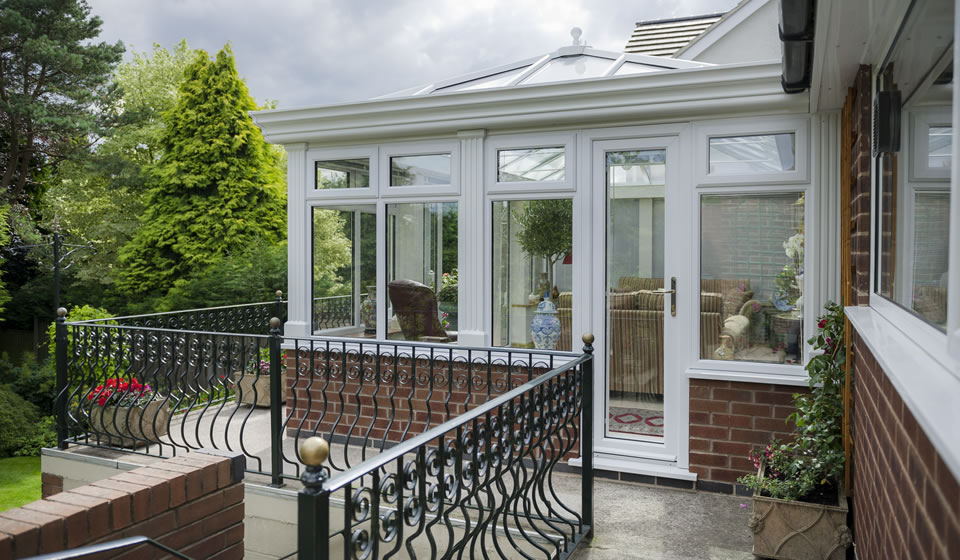
Benefits of Adding an Orangery to Your Home
Adding an orangery to a home can offer several practical and architectural benefits. One of the primary advantages is the creation of additional living space, which can be adapted for various uses, such as a lounge, dining area, workspace, or hobby room. This flexibility allows homeowners to utilise their existing property better.
From a property perspective, well-designed orangeries may increase resale value by expanding usable square footage and improving overall appearance. However, the exact impact on value depends on factors like the quality of construction, location, and market conditions.
Modern orangeries are built with energy efficiency in mind. Insulated materials, double glazing, and thermally efficient roofing systems help maintain consistent indoor temperatures, making the space comfortable to use throughout the year while potentially lowering energy consumption.
Overall, orangeries are valued for their adaptability and for enhancing a home’s functionality and aesthetic appeal.
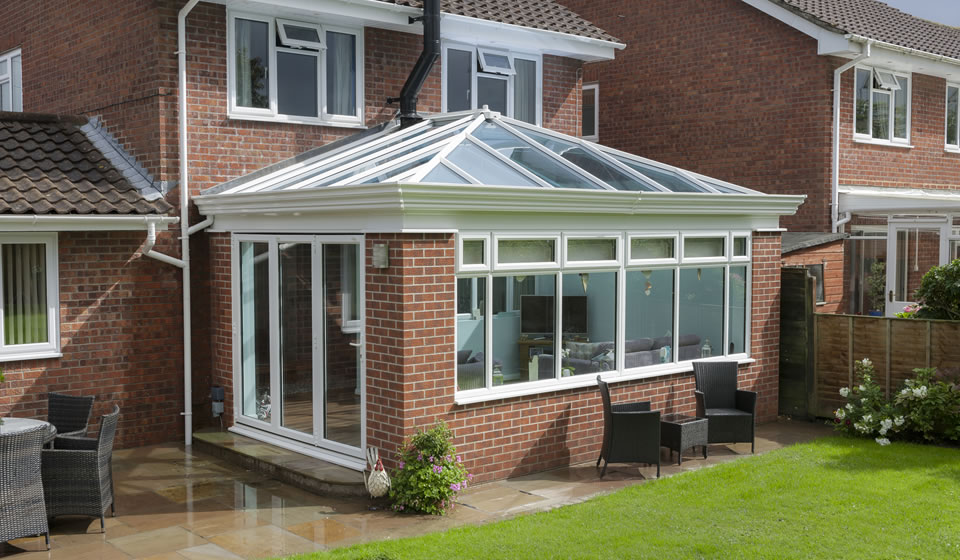
Enhancing Privacy with an Orangery
Privacy is an important factor to consider when planning a home extension, and orangeries offer several features to help address this need. Their solid walls and partially enclosed roof structure naturally provide more privacy than fully glazed alternatives like conservatories, while still allowing natural light through large windows and a central roof lantern.
Additional privacy can be achieved by installing frosted or patterned glass, integrated blinds, or curtains. These allow homeowners to adjust the level of visibility as needed without significantly affecting the brightness of the space.
The surrounding environment can also increase privacy. Landscaping with hedges, trees, or tall shrubs around the orangery can create a natural screen, helping to reduce visibility from neighbouring properties while maintaining an open feel.
Overall, an orangery design supports a balance between privacy and openness. Solid construction and well-placed glazing make the space feel enclosed and connected to the outdoors.
Creating a Tranquil and Elegant Space with an Orangery
The design of an orangery often emphasises natural light, which can help create a calm and comfortable environment. The combination of large windows and a central roof lantern allows daylight to fill the space, making it suitable for quiet activities such as reading, working, or relaxing.
Many homeowners furnish their orangeries with light, neutral colours and natural materials to enhance the sense of tranquillity. Soft furnishings and simple décor can help maintain a peaceful atmosphere.
The location of an orangery—typically adjacent to the garden—also contributes to its appeal. This proximity provides views of outdoor greenery, offering a visual connection to nature even while indoors. To reinforce this connection, incorporating indoor plants or natural elements into the space can further support a relaxed and pleasant ambience.
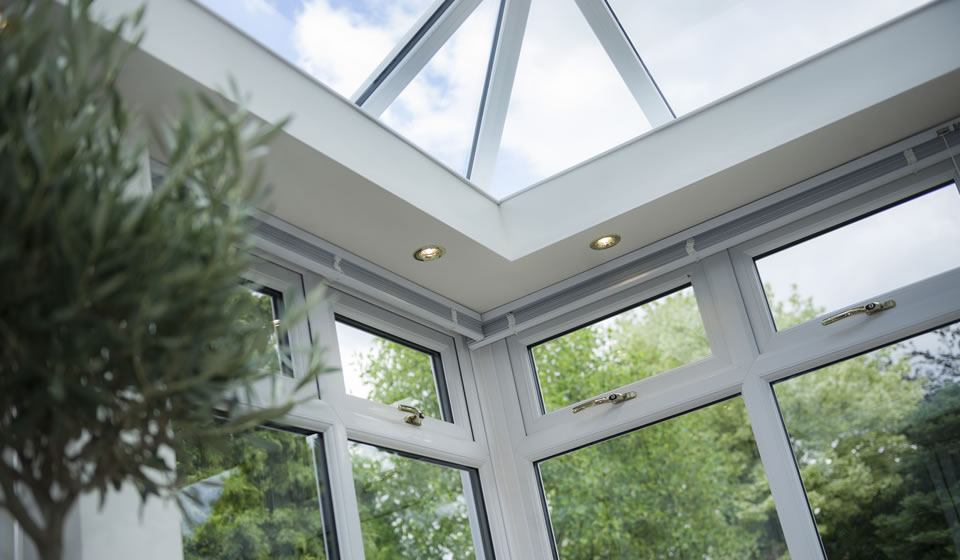
Summary
In summary, orangeries are home extensions combining traditional architectural elements with modern functionality. Originally designed to house citrus trees during colder months, they have evolved into versatile spaces suitable for various uses, such as living areas, dining rooms, or workspaces.
Their design—typically featuring roof lights or a central glass lantern with substantial wall structures—balances natural light, privacy, and insulation. This makes orangeries adaptable for year-round use and compatible with historic and contemporary homes.
Want to know more? The Thermaglaze team will be happy to help.

Frequently Asked Questions
How is an orangery different from a conservatory?
Orangeries are typically built with brick or stone walls and a glazed or partially glazed roof. Conversely, Conservatories are usually made entirely of glass and have a lighter structure.
What can I use an orangery for?
An orangery can be used for various purposes, including as a sunroom, a dining area, a greenhouse, or even a home office. Its versatility makes it popular among homeowners who need extra space and natural light.
Do I need planning permission to build an orangery?
In most cases, you will not need planning permission to build an orangery if it meets specific criteria. However, it’s always best to check with your local planning authority before starting building work.
